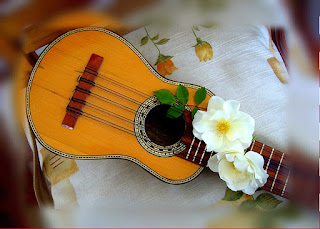With the 16 Swaras (s,r1,r2,r3,g1,g2,g3,m1,m2,p,d1,d2,d3,n1,n2,n3),there is no magic done in carnatic music to classify the ragas.Years ago ,from 14th to 17th century many scholars put a great effort in developing a base for classical music Raga Classification.THAT, is the sole source for all the other scholars in developing and enhancing the Raga patterns,both parent(janaka or melakarta) and child (janya) ragas.Melakarta or janaka ragas are classified based on Katapayadi Scheme or Ka-Ta-Pa-Ya Sankhya(numbering) system.
Ragas are classified ,in simpler terms as parent and child ragas,i.,e
- Melakarta or Janaka Ragas (Parent)
- Janya Ragas (Child).
Janya Raga scale is a subset of its parent raga,whereas Melakarta Ragas are classified based on Katapayadi system.
First 36 Ragas have Shudha Madhyamam (ma1) and next 36 Ragas have Prati Madhyamam(ma2).So the first division in 72 melakarta katapayadi system is based on Ma.
Next,72 ragas are divided into 6 Ragas per Chakra ,that will be 12 chakras(12 x 6 Melas).Each Chakra in sequence has a meaningful positioning,example,2nd chakra being netra(2 eyes) and 4th Chakra being Veda(4 vedas).
1st chakra - Indu
2nd chakra - netra
3rd chakra - agni
4th chakra - netra
5th chakra - baana
6th chakra - ruthu
7th chakra - rushi
8th chakra - vasu
9th chakra - brahma
10th chakra - disi
11th chakra - rudra
12th chakra - aditya
Scale in each chakra is differentiated with Rishabham and Gandharam (Ri and Ga).Example:
1st chakra - s, r1, g1 , m1, p , d , n , S
2nd chakra - s, r1 , g2 , m1, p , d , n , S and so on.Hence for each chakra in a sequence the swara sthanas of ri and ga will be as follows :
In the above,as mentioned, first 6 chakras have m1 so the example chakra shows m1.Next, s, p needn't be discussed.Next swara sthana d and n will be discussed in detail in next paragraph
r1 g1 , r1 g2 , r1 g3 , r2 g2 , r2 g3 , r3 g3 .
As you know, we can not put r2 g1 or r3 g2 because those swara sthanas are similar i.e., r2=g1 (Chathusruthi rishabham=Shudha gandharam) When I say similar, the swara sthanam or the tone of the swara is same hence they cant be differentiated.
Scales for Ragas are differentiated by Madhyamam(m) for 36-36 and rishabham and gandharam(r and g) for 6 each.Now how is each raga in a chakra classified .It is with daivatham and nishadam (d and n).Example :
1st chakra - s, r1, g1 , m1, p , d1 , n1 , S
2nd chakra - s, r1 , g2 , m1, p , d1 , n2 , S and so on.Hence, the order of d and n combination for every 6 ragas in sequence will be ,
d1 n1, d1 n2 , d1 n3 , d2 n2 , d2 n3, d3 n3.
Scales for Ragas are defined ,now How are the Ragas Named? Katapayadi Scheme ,needless to say,as in figure gives all the 72 ragas ,their swara sthanas and names.
1 2 3 4 5 6 7 8 9
క ఖ గ ఘ ఙ్ చ ఛ జ ఝ ఞ్
ట ఠ డ ఢ ణ త థ ద ధ న
ప ఫ బ భ మ
య ర ల వ శ ష స హ ళ క్ష ఱ్
In English :
1 2 3 4 5 6 7 8 9 0
ka kha ga gha ~m cha Cha ja Jha ~n
Ta Tha Da Dha Na ta tha da dha na
pa pha ba bha ma
ya ra la va Sa sha sa ha La ksha ~r
Raga Numbering is matched with the Ka-Ta-Pa-Ya scheme as written in the above pattern.For example, Raga 15 has 1 and 5 in the number.According to katapaya scheme, forming letters in the group 1 and 5 ,we get Ya and ma.Scholars followed left to right system and reversed the letter in number ,forming the first 2 letters of Raga 15 as ma and ya,hence the name mayamalawagowla ragam.








